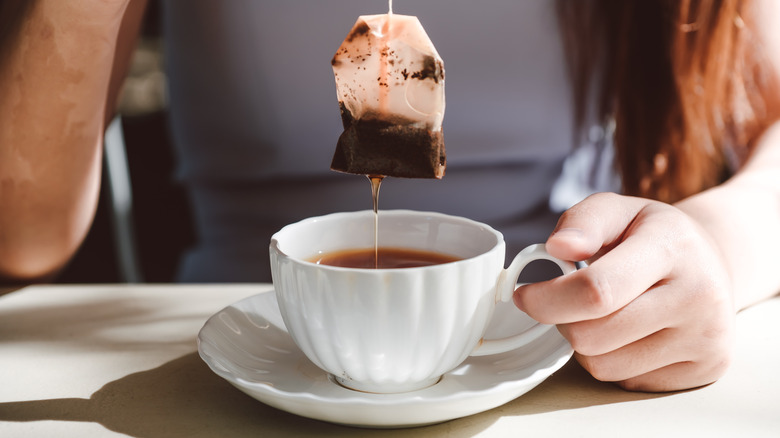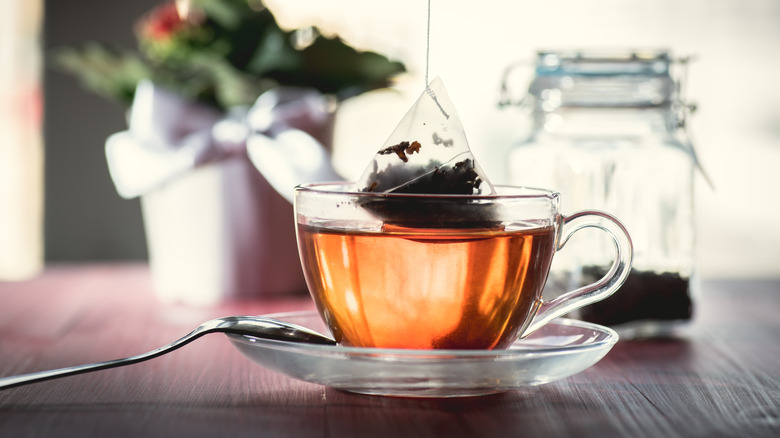Does Dunking Your Tea Bag Really Make A Difference?
After sleeping in on a quiet Sunday morning, you make your way to the kitchen to prepare a cup of your favorite tea. As your water heats up, you open your tea cupboard. You could use loose tea leaves in a diffuser, but that will take too long. Instead you opt for a tea bag.
You find the paper on the porch and take it to the kitchen table. The tea bag says to steep for several minutes, but you dunk it repetitively. The color quickly changes, so the tea flavor must be also steeping more quickly, right? (Speaking of which, did you know that both black and green teas come from the same leaves? Mental Floss says flavors only differ because of how the leaves were processed.)
Back to the tea bag question: Is dunking that tea bag over and over going to make the tea steep more quickly, or are you just fooling yourself?
The science of dunking tea bags
We like to think that dunking the tea bag makes it steep more quickly because the movement gives the illusion of particles moving more quickly. However, according to My Recipes, it's really only the color pigments that respond to dunking. The truth is, only hot water and time can make your tea steep.
Many people still argue that dunking the tea bag creates movement within the bag, therefore exposing more of the contents in a shorter timeframe and allowing for faster diffusion, per Forbes. We'll let you do your own reading up on the "wetting coefficients" of the leaves and bags, if that's your cup of tea.
You might have to wait the same amount of time whether you dunk your tea bag or just let it steep, but that gives you more time to enjoy the paper. If you really want to dunk something, maybe try dunking a homemade cookie!

